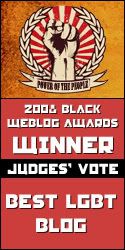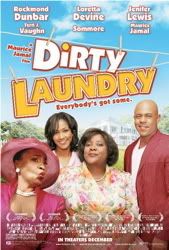
I first learned that I had the power to become, to define myself beyond the circumstance of my birth through the cultural pride my parents instilled in me and my brother. Our home was enriched with artifacts of black genius. There were books and albums of art titans such as Lorraine Hansberry, James Baldwin, the Temptations, Coltrane and Labelle. There was the framed Free Angela Davis portrait posted so high the crown of her afro almost brushed our living room ceiling. Through the acknowledgement of record, this little black boy was shown his past and thus felt assured a place in the world. “When I speak of home, I mean not only the familial constellation from which I grew, but the entire Black community: the Black press, the Black church, Black academicians, the Black literati, and the Black left.”
But as the gnawing consciousness of my queerness grew so did a sense of dislocation from family and community, all that I considered home—a loss of place. I found little affirmation within and outside of this home for the self that time was quickly uncovering. “Where is my reflection?” For black sissies coming of age in the late 70’s, Baldwin was the sole homosexual male figure we could look to who had won admission within the guarded gates of respectable black culture. Just at the edge of those gates, embraced by fellow outsiders, Sylvester, the femme disco diva, helped broker a wider acceptance of gender fluidity that defined the emerging decade. But beyond Baldwin and Sylvester, there was little evidence in black or queer media that black gay men existed.
By the middle of the decade, a new generation of black gay men’s voices began arising in concert. We were writing, publishing work and building organizations that articulated our realities and placed footholds on cultural and political landscapes across the country. Joseph Beam editor of “In the Life: A Black Gay Anthology”, the 1986 pivotal black gay men’s collection stood squarely at the forefront of this nascent movement. The book which featured the work of 29 authors was the first compilation of openly gay black men’s writings. As such In the Life helped break stony ground for successive generations of black queer writers to publish work and build an indispensible canon that continues to deconstruct concepts of identity, love, gender, race, class, sexuality, family, class and the dynamics of power and privilege. None other than the fabulous Sylvester gave the compelling forward—“At times I cried just remembering how it is to be both black and gay during these truly difficult times. But here we are still proud and living, with a culture all our own.”

“I am most often rendered invisible, perceived as a threat to the family, or am tolerated if I am silent or inconspicuous.” With “In The Life”, Beam presented his daunting lot within heterosexist black society as a fundamental condition, a systemic marginalization endured by most black gay men. He called out the parallel exclusions from queer culture, listing the absences of black men from the books and magazines that occupied the shelves of Giovanni’s Room, where he worked. Like his close friend and colleague Essex Hemphill, Beam was emboldened by the work of lesbian feminists of color such as June Jordan, Barbara Smith and Cherrie Moraga. He knew that black gay men like their black lesbian sisters before them would have to chart their own path toward self determination and visibility, to discover their own power. “Visibility” he wrote, “is survival.” Beam pointed out that while the presence and participation of black gay men in all relationships and systems that make up black society is undeniable, in 1984 we were still largely unacknowledged and coerced into silence which perpetuated our erasure.
“The legacy we leave.” In order to nurture indeed to save black gay men’s lives, Beam knew that we had make our truths indelible by writing them in their fullness so that they may be shared and passed on. He likened the anthology to the very organization Hemphill wishes to start “to save my life” in Hemphill’s signature piece “For My Own Protection”. For Beam creating In The Life was much more than an expression of artistic vision or a showcase for black gay writers. In the face of racism, homophobia, violence, depression, isolation, dehumanization and of course AIDS, In The Life was an act of survival, a gift of love to feed those who had long hungered for their own self definition.
I can only wonder exactly what Sylvester meant in the “In The Life” forward when he mentioned living black and gay during those “truly difficult times.” I can recall with certainty and the added clarity of hard earned wisdom how hard those times were for me. It was in 1985 that at 25, I had developed symptoms of HIV infection, then a hopeless diagnosis. At that time, I was writing and performing poetry on my own and as part of an ensemble Us’s in the coffeehouses of the Village, midtown, and Fort Greene, Brooklyn. I discovered in the face of my threatened extinction that I am a writer and that writing more than any act might enable me to survive and leave something of use behind. By 1986, I had heard about Beam too late to respond to his call for manuscripts. That summer I had planned a trip to Philadelphia to see my friend Cynthia who was also a friend of his. She promised to introduce us and he and I even spoke over the phone. I remember his warmth and our mutual eagerness to meet in person. I had to cancel my trip for some forgotten reason. I was more than consoled by the autographed copy of this newly published work he mailed me. “For Craig (via Cynthia)” it reads. “The legacy we leave are the deeds we do. Joseph Beam 13 September 1987”.

I recall the skin prickling revelation as I turned from page to page that I was holding a precious piece of history in my hand. I was reading the works of living black gay men who were my contemporaries. “We are Black men who are proudly gay.” I had first seen Essex Hemphill at a reading featuring Audre Lorde and was immediately taken in. There was Assoto Saint, a mystical, witty character whom I met at a Blackheart Collective meeting, Craig G. Harris and Donald Woods, both New Yorkers whose local work I had admired. I knew that miraculous as it was, this was a beginning and that it offered me possibilities. By then Assoto and Donald had become active performers with Other Countries, a black gay mens collective that continued the tradition Beam largely made possible. How poetically sad and strange it is that Joseph Beam never lived to see much of what would unfold through the doors his efforts opened. On December 27, 1988, Beam died from AID related complications, less than a week following his legendary brother Sylvester.
The life that I lead now is an inherited privilege and my work a sacred commitment handed down from Joseph, Sylvester, Essex and all those wonder weaving brothers and sisters. I often hear Joseph’s voice in my own writing. His legacy is manifest through the work of G.Winston James, Marvin K. White, Adodi Muse and other artists he inspired. Upon the occasion of Black History Month 2011, let us commit to learn more and regard the legacy left by Joseph Fairchild Beam. Like many of my brothers his name continues to go unmentioned in recent documentaries and anthologies that recount black and lgbt liberation movements. Too few Black queer folk have a clue who he was and what he did for us. I recognize as a 50-something survivor of that generation I am here to tell the stories and name the names. What may the deeds Joseph accomplished over 20 years ago implore us to embark now? How might we as Joseph act to make sure that we all especially the young know our black gay heritage? Every day, I carry in my heart, I move and move others through Joseph’s resounding declaration. “The bottom line is this: We are Black men who are proudly gay. What we offer is our lives, our love, our visions. We are risin’ to the love we all need. We are coming home with our heads held up high.”
Craig Washington is an Atlanta resident and respected writer and community activist. Learn more about his life and work via his website here.


















<< Home